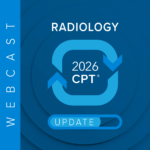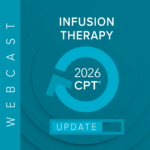There is continued confusion over the use of patient homes as off-campus, provider-based clinics for Medicare billing purposes. This is the provision in the Centers for Medicare & Medicaid Services’ (CMS’s) second recent Interim Final Rule (IFR) that allows hospitals to bill for services provided by employed hospital staff, such as therapists, dieticians, and counselors, who do not bill Medicare directly for their services (as they would in private practice). This provision also allows a hospital to bill a facility fee when one of their employed physicians performs a telehealth visit with a patient at a temporary location that is considered a provider-based clinic – including a patient’s home.
Here is how I understand it, in overly simple terms. On-campus, provider-based clinics are always paid the Outpatient Prospective Payment System (OPPS) rate for services provided there. On the other hand, off-campus, provider-based clinics are either “old” or “new,” also called “excepted” and “non-excepted.” Services at old off-campus clinics are grandfathered to be paid at the OPPS rate. To signify that, claims are submitted with the -PO modifier. Services at new off-campus clinics are paid at the Physician Fee Schedule (PFS) equivalent rate, and claims get the -PN modifier. For some services, the payment is higher for OPPS than PFS, and for some it is the same. In general, when off-campus clinics relocate, add a new location, or add services, it can affect their status as “old” and require the change to billing services as “new” – and getting paid at the lower PFS rate.
But CMS has provided waivers and flexibilities that change this dramatically during the COVID-19 public health emergency (PHE). First, they are allowing a patient’s home to be considered a hospital clinic. That means that the patient, while sitting at their dining room table, can be viewed as sitting in a hospital outpatient clinic receiving a hospital outpatient service. This designation of patients’ homes as off-campus, provider-based clinics allows the hospital to bill for services performed there remotely, such as physical therapy and diabetic education, and to use the patients’ homes as an originating site for telehealth visits with an employed physician. There are two ways to do this.
The first option is that the hospital can provide a one-time notification to the CMS regional office, stating that they will be using “patient homes” in general as off-campus, provider-based clinics. This applies to every patient home that the hospital uses during the duration of the PHE. If they choose this, then every home is considered a “new” location, and the service will be paid at the PFS-equivalent rate. These claims get the -PN modifier. They also bill using the address of the hospital main campus on the claim. The notification to the CMS regional office is optional, but certainly a good practice to ensure that CMS is aware of your actions.
The other option is to use the extraordinary circumstances policy in the second IFR to “relocate” a provider-based clinic temporarily to a patient’s home individually. This would allow the hospital to be paid the OPPS rate for the services that are performed at that location. The hospital would use the -PO modifier to indicate that. But in this option, the hospital must notify the CMS regional office by email of their hospital’s CCN; the address of the current provider-base department; the address(es) of the relocated departments (the patient home addresses); the date they began furnishing services at the new PBD(s); a brief justification for the relocation and the role of the relocation in the hospital’s response to COVID-19; and an attestation that the relocation is not inconsistent with their state’s emergency preparedness or pandemic plan. Interestingly, that information does not have to be sent until 120 days after starting to provide services at these locations, making operationalizing the process much easier. CMS must approve these relocations, and if the relocation is not approved, the care provided can be rebilled with the -PN modifier.
Since you are establishing patients’ homes as provider-based clinics, the conditions of participation for such clinics, located at 42 CFR 413.65, and 42 CFR 482.41, such as emergency power and fire safety plans, would normally have to be met. But CMS has waived those requirements as part of the PHE. That means that a hospital’s ability to use patients’ homes is contingent upon a formal waiver. Per instructions from CMS, as outlined in MLN Matters SE20011, the -DR condition code or -CR modifier should therefore be used. The use of the -DR or -CR is informational only, since the claim will appear as if the service was provided in person, and its absence should not result in a denial.
With each CMS Town Hall call, I seem to learn a little bit more, and it makes me appreciate more the work of the CMS officials who could create such flexibilities in such a short time.
Like all of us, I am sure they will sleep well once the PHE has passed.













